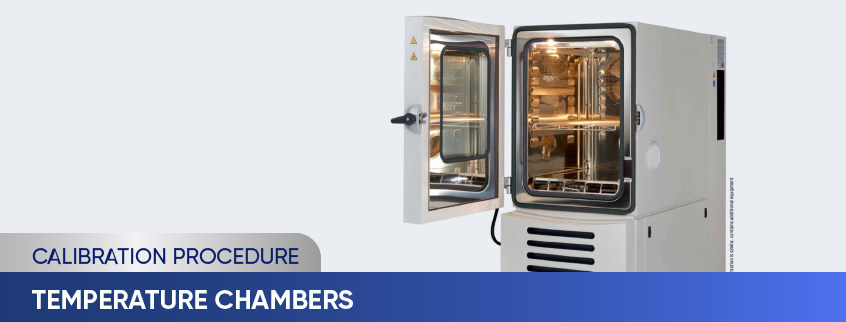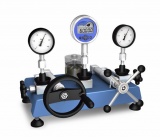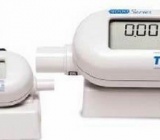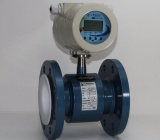Temperature chambers calibration

Key Contents
- What is a temperature chamber?
- Applications
- Calibrate temperature chambers
- Why should you calibrate temperature chambers
- Calibration procedure
Temperature chambers are devices used to control and maintain stable temperatures for samples in laboratories and industry. It is also used to test product durability under different temperature conditions.
1. What is a temperature chamber??
A temperature chamber is a device that uses electricity to heat or cool, has a working compartment, and a system for measuring and controlling temperature according to set values; it has a fan system for forced convection or vents for natural convection (For example: refrigerator, cooler, incubator, dryer, furnace,... depending on the working temperature range.
2. Applications
Temperature chambers are versatile tools used in many industries. Their role in simulating various temperature conditions makes them indispensable tools in research, development, and quality assurance. Some applications of thermal cabinets are:
- Environmental testing: helps evaluate how a product or material performs in different environments. For example, test the durability of batteries, electronic devices, pharmaceuticals, food products, etc.
- Thermal shock testing: Temperature chambers can help evaluate how a product or material will react to sudden changes in temperature. Thermal shock testing may reveal that the product is likely to crack, warp, or become damaged due to temperature.
- Preserving food, drugs, vaccines, biological products, chemicals,...
- Culturing samples, cleaning medical instruments...
- Widely used in some industries: automotive industry, electronics, food, medical / pharmaceutical, plastic production, telecommunications, military,.....
3. Calibrate temperature chamber
- Calibration of a temperature chamber is a measurement activity to check test results to make an assessment of the condition, structural stability, and function of the thermal cabinet.
- A temperature chamber is the process of ensuring that the temperature and humidity values measured in the chambers are accurate and consistent. Calibration needs to be carried out periodically (at least once a year) so that the equipment can be carried out smoothly to meet the needs of laboratories and production facilities.
- Depending on the type and temperature range of the thermal cabinet, there are different methods and equipment for calibration. Some popular types of temperature chambers are:
- An incubator (or Incubator) is an indispensable part of laboratories. This is a specialized cabinet line that can be used in cultivating microorganisms in artificial environmental conditions. Besides, this line of cabinets can also be used to culture single and multicellular organisms, as well as be applied in many other production and research processes.
- Drying oven: is a device that creates high temperatures to dry and dry foods. Drying cabinets can help reduce size, save space, and extend the shelf life of food.
- Refrigerator: is a device that creates positive temperatures to preserve and cool foods. Refrigerators can help prevent the growth of bacteria and mold, maintaining the quality and flavor of food.
- Refrigerator: a device that uses liquid or gas to cool foods. Refrigerators can help keep fruits and vegetables fresh and intact.
- Freezer: A device that creates negative temperatures to preserve samples in the food industry or medical microbiology.
4. Why should you calibrate the temperature chamber?
Regular calibration of temperature chambers is important because they are used to test various materials, products, and components in a controlled environment. Some of the benefits of calibrating temperature chambers include:
- Accuracy and consistency: Calibration helps reduce errors and variations in measurements made by chamber sensors, control systems, and ancillary equipment. This ensures that the test results are reliable and trustworthy.
- Compliance with standards: Calibration helps meet industry standards and regulations. For example, quality certification, product approval, or customer satisfaction.
- Data integrity and reliability: Calibration helps maintain the validity and accuracy of test data. This enables better decision-making, problem-solving, and optimization of processes based on accurate information.
- Quality assurance: Calibration helps provide documentation and evidence of compliance with standards. This also improves quality control of the overall inspection process.
Calibration frequency depends on many factors, but in general, calibration should be performed at least once per year, or more frequently if there are significant changes in temperature or humidity.
5. Calibration procedure
- Standard temperature measuring probes (Standard measuring probe, thermocouple measuring probe (TC K); Dataloggers...)
- Multi-channel standard indicating (or self-recording) device
- Environmental temperature: ensures the working requirements of the device
- The supply voltage must be stable and according to the manufacturer's regulations.
- Clean the thermal cabinet that needs to be calibrated
- Check the operating status of the thermal cabinet that needs to be calibrated according to the manufacturer's manual
- Place fixed standard temperature measuring probes evenly distributed in the thermal cabinet to be calibrated.
- Install the standard temperature probes into the standard indicating (or self-recording) device according to the correct position of the channels/record the temperature according to the corresponding channels.
- Device model
- Production number
- Manufacture factory
- Temperature range
- A temperature chamber is not cracked or damaged. The cabinet door must be sealed, not warped or cracked; Other parts of the Thermal Cabinet operate without signs of abnormality.
- When supplied with nominal voltage, the heating cabinet must operate normally.
- The controller for the functions of the Temperature Chamber must operate normally.
- The indicator of the Temperature Chamber must operate stably, without sudden fluctuations. With the digital indicator, the displayed numbers must be clear, not blurred or out of focus; For similar indicators, the graduation lines must be complete, not blurred or lost, and the indicator needle must not be stuck.
- Determine the main model number of the Temperature Chamber
- Determine the uniformity of the Temperature Chamber
- Determine the stability of the Temperature Chamber
- Calculate the measurement uncertainty of the standard combination
- Calculate the measurement uncertainty of the thermal cabinet
- Calculate the combined measurement uncertainty
- Calculate the expanded measurement uncertainty (with 95% confidence level, coverage factor k = 2)
- After calibration, the temperature chamber is issued a calibration certificate with calibration results.
- Recommended calibration cycle: 01 year
To consult and request a quote on our calibration services, please kindly contact us via the following information:
LABORATORY: DONG TAM MEASUREMENT AND TECHNICAL TRADING SERVICE CO., LTD
Address: No.57-59 Street 11, Binh Hung Residential Area, Binh Hung Commune, Binh Chanh District, Ho Chi Minh City
TEL: 028 375 83 869 - Hotline: 0909 347 891 (Mr. Lâm)
Email: info@dongtam-mes.vn
Relative post | Xem tất cả
- Stopwatches calibration
- ORP meter calibration
- Hydrometer calibration
- Analytical and Technical balance calibration
- Analytical and Technical balance verification
- Spring dial scales verification
- Spring dial scales calibration
- Bench weight scale verification
- Bench weight scales calibration
- Platform scales verification
- Platform scales calibration
- Chlorine meter calibration























 Legal
Legal  Call: 0283.7583869
Call: 0283.7583869  Search for Certificate
Search for Certificate  Contact
Contact